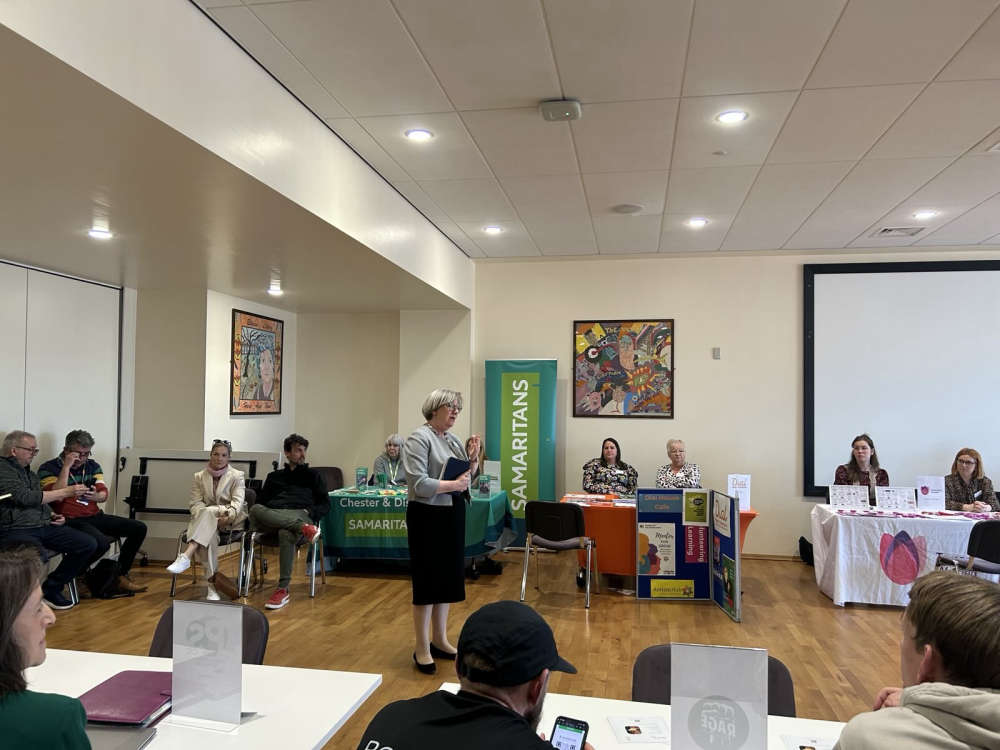
Footfall in many of the UK’s town and city centres recovered to pre-lockdown levels this summer, but the share of people returning to the workplace has not increased since late June, despite the Government’s campaign to get people back into offices.
New data from the Centre for Cities’ Street Recovery Tracker, in partnership with Nationwide Building Society, reveals that while footfall in many of the UK’s town and city centres recovered to pre-lockdown levels this summer the share of people returning to the workplace has not increased since late June, despite the Government’s campaign to get people back into offices.
Centre for Cities and Nationwide are working together to better understand how large cities and towns continue to be impacted by Covid-19, particularly if the recent rise in cases is sustained.
Overall city centre footfall up by 7% in August
According to mobile phone tracking data, despite the continued reluctance of people to return to their places of work, overall town and city centre footfall increased by seven-percentage points to 63% of pre-lockdown levels since the beginning of August.
In 14 of the UK’s 63 largest cities and towns, city centre footfall in August exceeded pre-lockdown levels. Seaside towns such as Blackpool, Bournemouth and Southend and smaller cities such as Birkenhead and Chatham proved particularly popular with visitors.
Again, overall footfall in larger cities remains well below the national average. In Central London footfall is still at just 31% of pre-lockdown levels, in Manchester it is 49% and in Birmingham it is 52%.
|
Where has overall city centre visitor footfall recovered the most? |
||||||
|
Rank |
City or town centre |
Total city-centre footfall as a percentage of pre-lockdown levels (HIGHEST) |
Rank |
City or town |
Total city-centre footfall as a percentage of pre-lockdown levels (LOWEST) |
|
|
1 |
Blackpool |
141 |
1 |
London |
31 |
|
|
2 |
Bournemouth |
133 |
2 |
Manchester |
49 |
|
|
3 |
Birkenhead |
124 |
3 |
Birmingham |
52 |
|
|
4 |
Southend |
116 |
4 |
Oxford |
57 |
|
|
5 |
Chatham |
115 |
5 |
Leeds |
57 |
|
|
6 |
Burnley |
111 |
6 |
Nottingham |
59 |
|
|
7 |
Basildon |
110 |
7 |
Cardiff |
61 |
|
|
8 |
Doncaster |
110 |
8 |
Sheffield |
63 |
|
|
9 |
Portsmouth |
106 |
9 |
Bristol |
63 |
|
|
10 |
Telford |
106 |
10 |
Leicester |
64 |
|
|
UK city average: Total visitor footfall is now at 63%, compared to pre-lockdown. Week commencing 24 August. Source: Locomizer |
||||||
|
Where is city and town centre footfall back to pre-lockdown levels?
|
|
|
Blackpool Bournemouth Birkenhead Southend Chatham Burnley Basildon |
Doncaster Portsmouth Telford Warrington Wigan Sunderland Hull |
|
Cities with a footfall score at or above 100% of pre-lockdown levels week commencing 24 August. Source: Locomizer |
|
But levels of people returning to their workplace remains flat
The data shows weekday worker footfall in the centres of the UK’s largest cities and towns remains at just 17% of pre-lockdown levels on average – exactly the same as it was at the end of June.
The share of people returning to their places of work is even lower in many of the largest and most economically prosperous cities with London, Leeds, Birmingham, Manchester and Cardiff all still below the UK city average.
Recovery has been stronger in smaller cities and large towns where weekday worker footfall is on average 27% of pre-lockdown levels. In Mansfield the share of people back at their place of work is now at 42% of what it was in February. However, nowhere has yet reached even half of pre-lockdown levels, so the UK has a long way to go if office life is to ever return to ‘normal’.
|
Where are people back in the office? |
||||||
|
Rank |
City or town centre |
Places with the LARGEST share of people back in their place of work, compared to pre-lockdown (%) |
Rank |
City or town |
Places with the SMALLEST share of people back in their place of work, compared to pre-lockdown (%) |
|
|
1 |
Mansfield |
42 |
1 |
Oxford |
9 |
|
|
2 |
Basildon |
38 |
2 |
Leeds |
13 |
|
|
3 |
Newport |
36 |
3 |
London |
13 |
|
|
4 |
Birkenhead |
35 |
4 |
Birmingham |
14 |
|
|
5 |
Blackburn |
35 |
5 |
Manchester |
14 |
|
|
6 |
Northampton |
34 |
6 |
Cardiff |
15 |
|
|
7 |
Stoke |
34 |
7 |
Reading |
16 |
|
|
8 |
Derby |
31 |
8 |
Sheffield |
16 |
|
|
9 |
Chatham |
31 |
9 |
Liverpool |
16 |
|
|
10 |
Wigan |
31 |
10 |
Portsmouth |
16 |
|
|
UK city average: 17% of people back in their place of work, compared to pre-lockdown. Week commencing 24 August. Source: Locomizer |
||||||
The persistently low numbers of people going back to work in city centres, particularly in big cities, reinforces the concerns for the future of shops, cafes, restaurants and bars that depend on office workers for custom.
Centre for Cities’ Chief Executive Andrew Carter said:
“Good weather, Eat Out To Help Out and a boost to domestic tourism have helped increase visitor numbers to the UK’s seaside towns, but we should not celebrate too soon. We do not know yet whether this will continue into autumn and our biggest cities, which we rely on to power the UK’s economy, are still struggling in the wake of lockdown.
“There is little indication that workers are heeding the Government’s call to return to their offices and city centre restaurants, pubs and shops face an uncertain future while they remain at home. So, unless we see a big increase in people returning to the office, the Chancellor must set out how he will support the people working in retail and hospitality who could soon find themselves out of a job.”
Mandy Beech, Nationwide’s Director of Branches, said:
“This latest research tells us Britain’s city and town centres continue to see significantly reduced footfall despite the nation having emerged from lockdown some time ago. However, there are positive signs that visitor numbers are picking up in many regional areas. While we can all hope life returns to normal quickly, the reality is that progress will be both uncertain and slow as workers look to return to their offices over the coming months.
“As an organisation rooted in the UK’s cities and towns, we want to do what we can to serve our members as the nation rebalances itself. During lockdown we challenged ourselves to keep 90 per cent of our branches open and today that stands at 98 per cent. While our own footfall has fluctuated, our branch employees have been able to support call-centre colleagues to help meet demand. As a vital service, we will continue to work in this way as we understand and respond to the needs of our members at this time.”

 Appeal to help locate missing man from Neston
Appeal to help locate missing man from Neston
 University of Chester student-run events raise £2,400 for charity
University of Chester student-run events raise £2,400 for charity
 Jodrell Bank Presents: A Stitch in Space Time
Jodrell Bank Presents: A Stitch in Space Time
 Appeal for information after dead dog found in duffle bag
Appeal for information after dead dog found in duffle bag
 Chester and Wirral Football League - Weekend Round Up
Chester and Wirral Football League - Weekend Round Up
 POPULAR CHESTER BUSKER RETURNS TO TOWN HALL STAGE FOLLOWING CONCERT SUCCESS
POPULAR CHESTER BUSKER RETURNS TO TOWN HALL STAGE FOLLOWING CONCERT SUCCESS
 Housing and Support Fayre Helps Chester North & Neston Residents Access Vital Services
Housing and Support Fayre Helps Chester North & Neston Residents Access Vital Services
 Successful local hospital liver cancer screening service continues to expand
Successful local hospital liver cancer screening service continues to expand
 POPULAR CHESTER BAR CELEBRATES 25th ANNIVERSARY WITH SPECIAL LEGO MODEL
POPULAR CHESTER BAR CELEBRATES 25th ANNIVERSARY WITH SPECIAL LEGO MODEL
 Cheshire Digital Agency Fly High Media Shortlisted for European Search Award
Cheshire Digital Agency Fly High Media Shortlisted for European Search Award
 Blues Match Report: Hereford 2 - 2 Chester FC
Blues Match Report: Hereford 2 - 2 Chester FC
 Blues Match Preview: Hereford v Chester FC
Blues Match Preview: Hereford v Chester FC
 Ten arrested for drugs offences following warrants in Chester
Ten arrested for drugs offences following warrants in Chester
 Suspended prison sentence and indefinite ban for Cheshire man who abused his dog
Suspended prison sentence and indefinite ban for Cheshire man who abused his dog
 Recovered Stolen Items
Recovered Stolen Items
 Man charged in relation to courier fraud
Man charged in relation to courier fraud
 Police to target criminal use of Cheshire’s roads
Police to target criminal use of Cheshire’s roads
 Council awarded Gold Armed Forces Award
Council awarded Gold Armed Forces Award